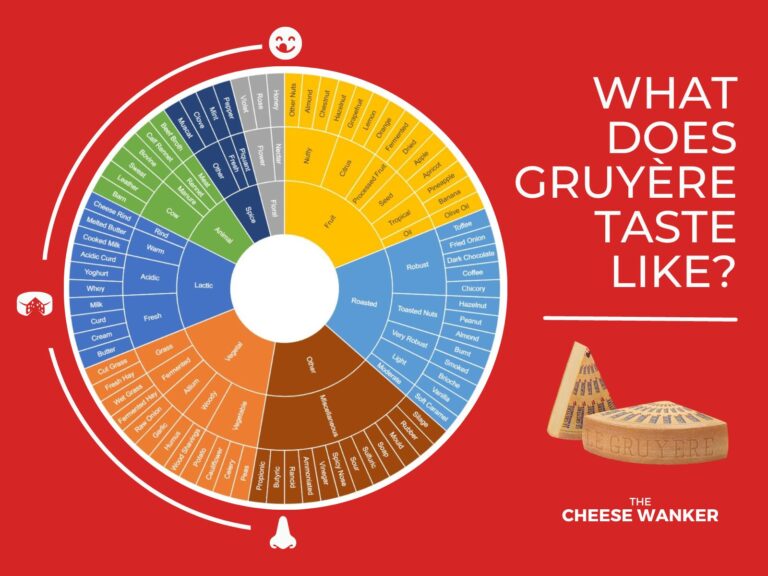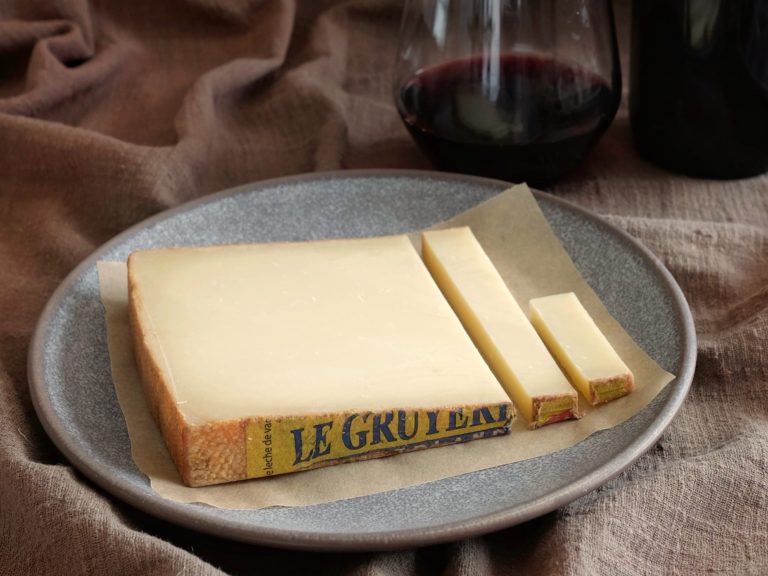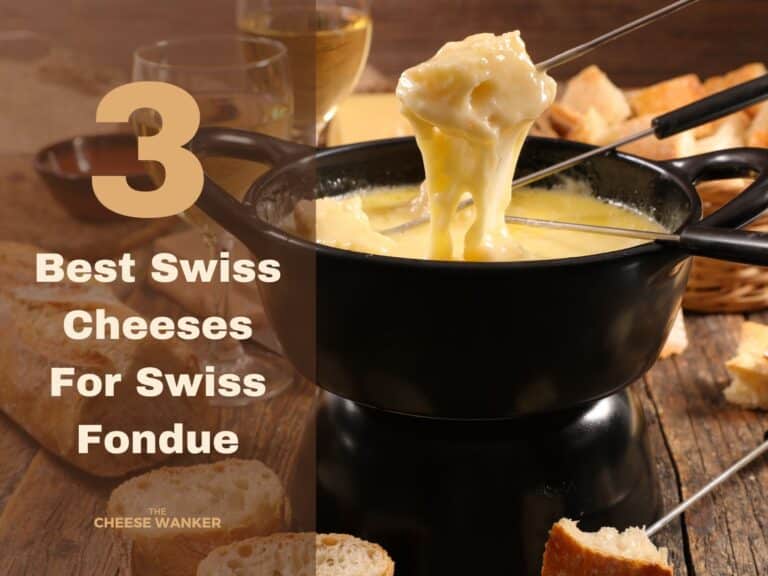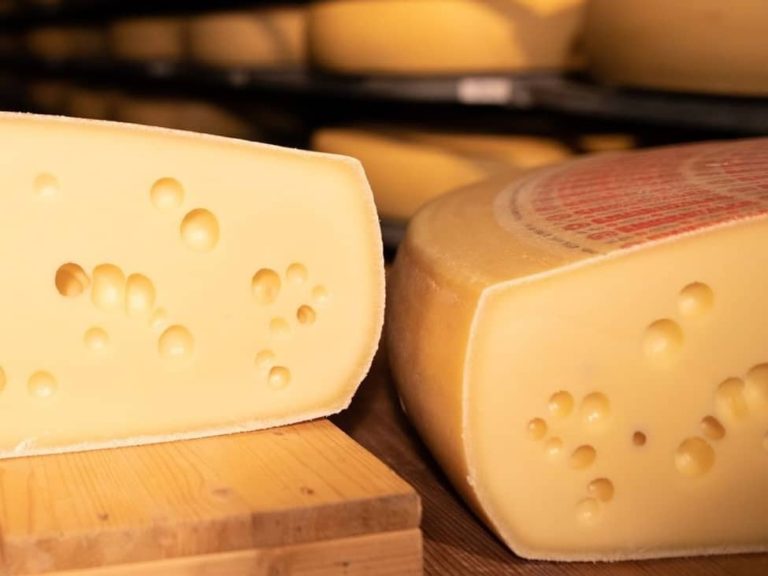When we think of Swiss cheese, the image most of us have is a semi-hard cheese with large holes. But there is so much more to Switzerland’s cheeses that this. Read on to discover our 9 best Swiss cheeses.
[Disclaimer: This post contains affiliate links. If you use these links to make a purchase, we may earn a commission (at no cost to you).]
1 Emmentaler
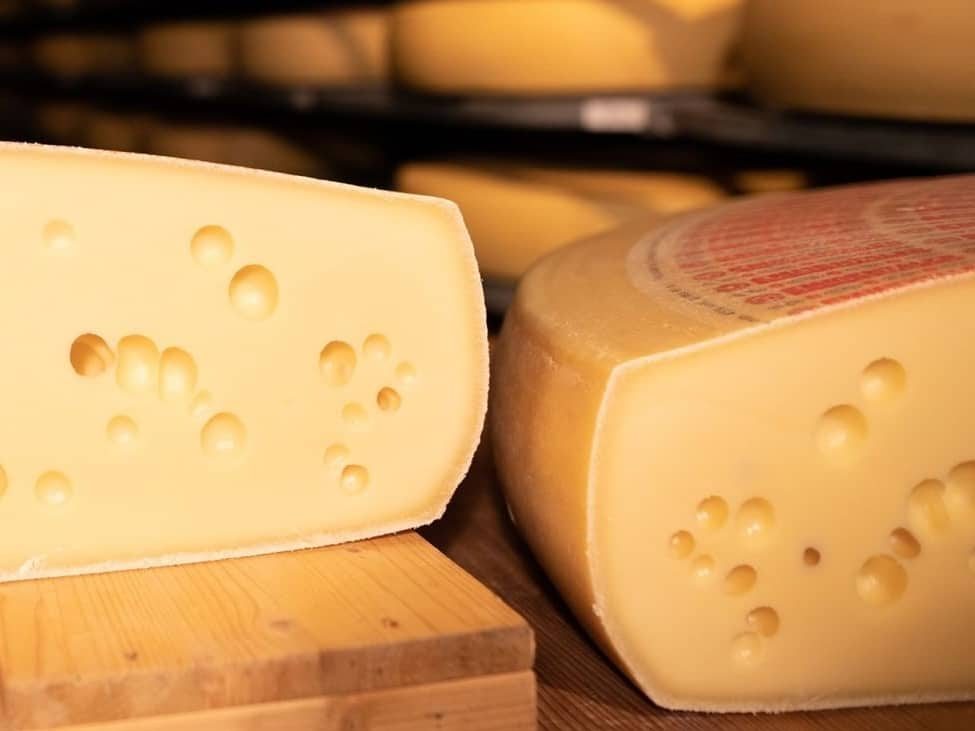
Let’s start with the Swiss cheese that actually has large eyes. Yes, those holes in cheese are called eyes. And the one pictured above is a traditional cow’s milk cheese called Emmentaler.
Weighing in at 120kg, Emmentaler is Switzerland’s largest cheese. And, it is also one of the largest cheeses in the world! Effectively, local cheesemakers release wheels of this cheese for consumption at different ages.
At 4 months, the young cheese is mild and nutty. By 8 months (called Réserve), it becomes much fruitier. Finally, at 12 months, it develops a full-flavoured complexity and a crumblier texture.
2 Appenzeller
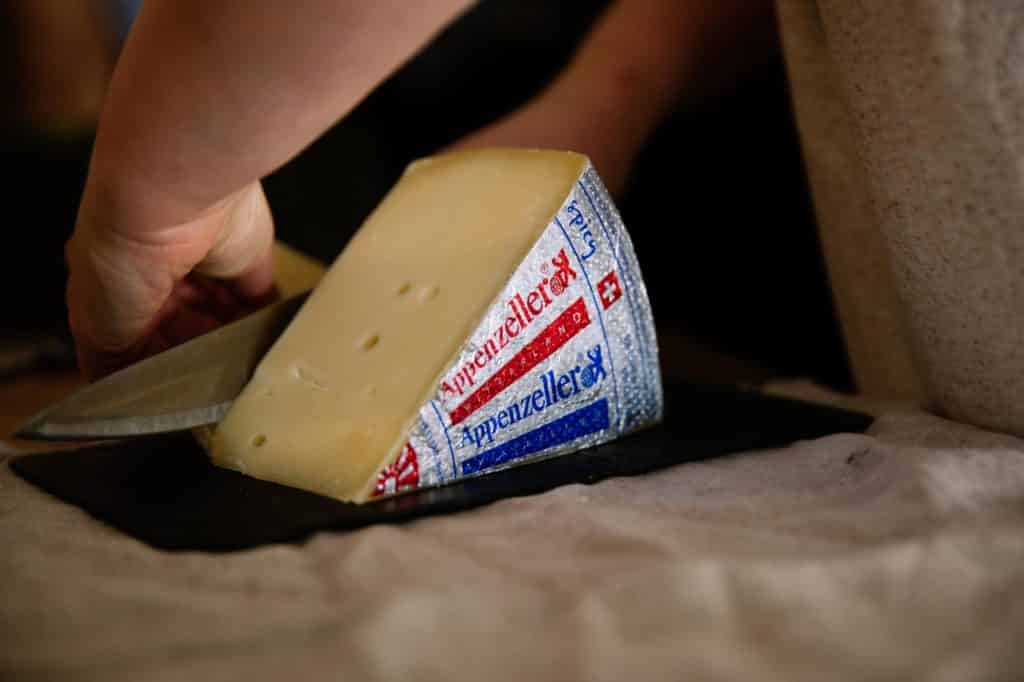
Next, we have the cheese that the locals affectionately call Switzerland’s most flavoursome cheese. Appenzeller is a semi-hard cheese that finds it roots in the Alpstein region of the Swiss Appenzell Alps.
Due to an intense herbal mixture wash, Appenzeller has quite a unique flavour. As the cheese ages, its flavour intensifies and gets more complex.
Hence, at 3 months, it is mild and savoury with hints of herbs and flowers. On the other hand, at 9 months, Appenzeller has more robust flavours of herbs and spices. And its paste is firmer and dotted with scrumptious cheese crystals.
3 Chällerhocker
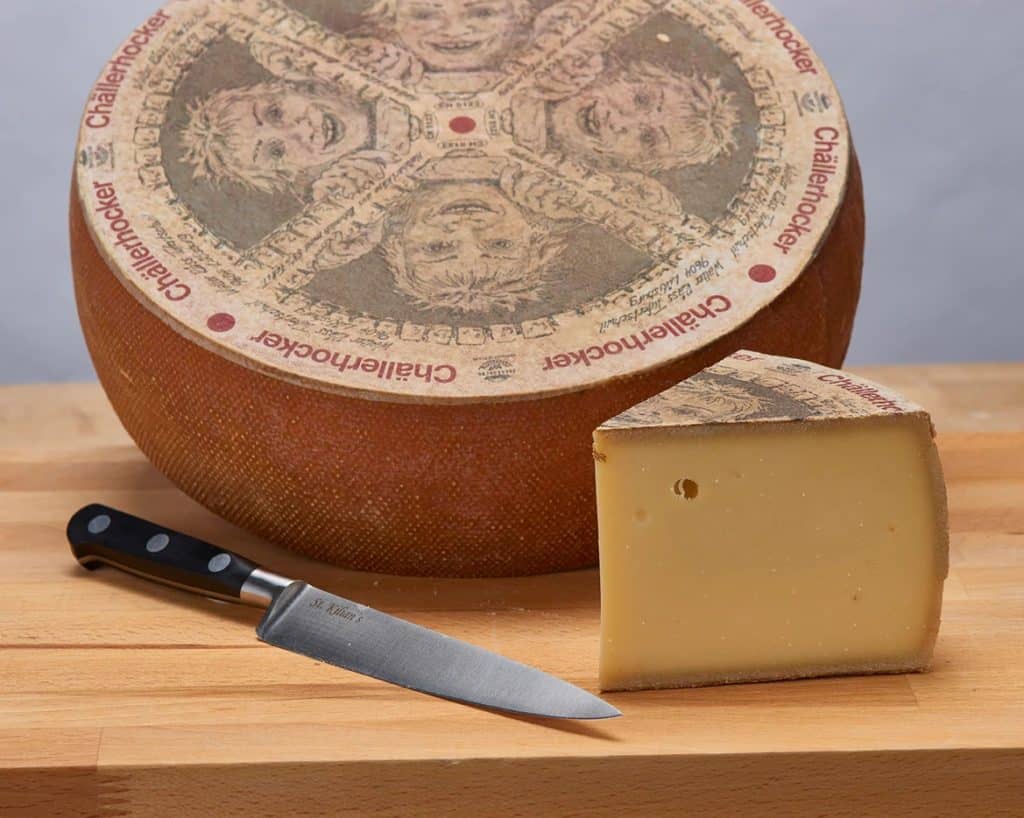
What’s not to love about this extravagant Swiss cheese? Of course, there’s the creepy kid on the label. But our affection for this cheese from St Gallen goes well beyond the creep factor.
All things considered, Chällerhocker is a fairly young cheese. In 2003, local cheesemaker Walter Räss wanted to start making a completely new cheese. He used his expertise as an Appenzeller cheesemaker to craft this wonder made with pure Jersey milk and a secret blend of wine, herbs and spices.
After maturing for 8 long months in a cellar, this cheese develops a nutty aroma and a malty and sweet flavour with a spicy finish. Actually, chällerhocker means “sitting in the cellar” in Swiss German, and it is an apt name for more than one reason.
4 Le Gruyère
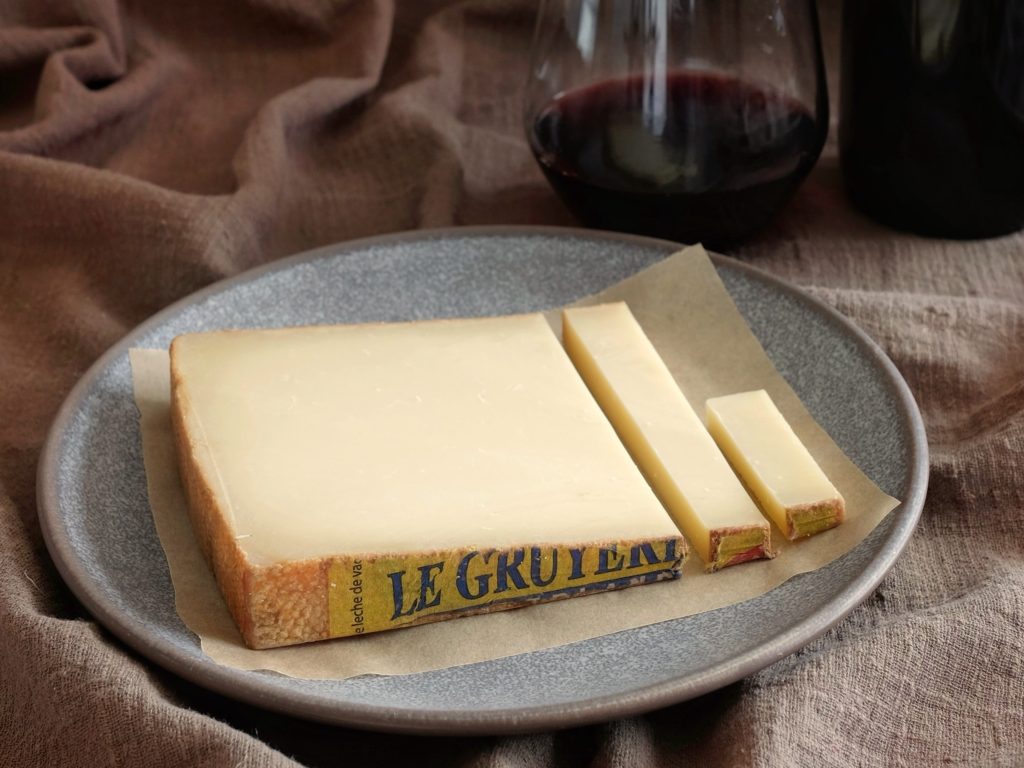
Le Gruyère might just be Switzerland’s most famous cheese. While its origins date back to the early 12th century, local artisans still make to this day using the same, traditional methods.
Moreover, only a select number of artisanal cheesemakers in a handful of cantons in Switzerland are allowed to produce Gruyère. And, they always use the finest local raw, unpasteurised cow’s milk.
Between 6 and 9 months of age, this famous cheese has a soft and refined taste with sweet notes. From 10 months onwards, it is referred to as Réserve and has a full-flavoured and aromatic taste. Some wheels will be matured up to 18, or even 24 months for even more robust flavours.
5 Vacherin Fribourgeois
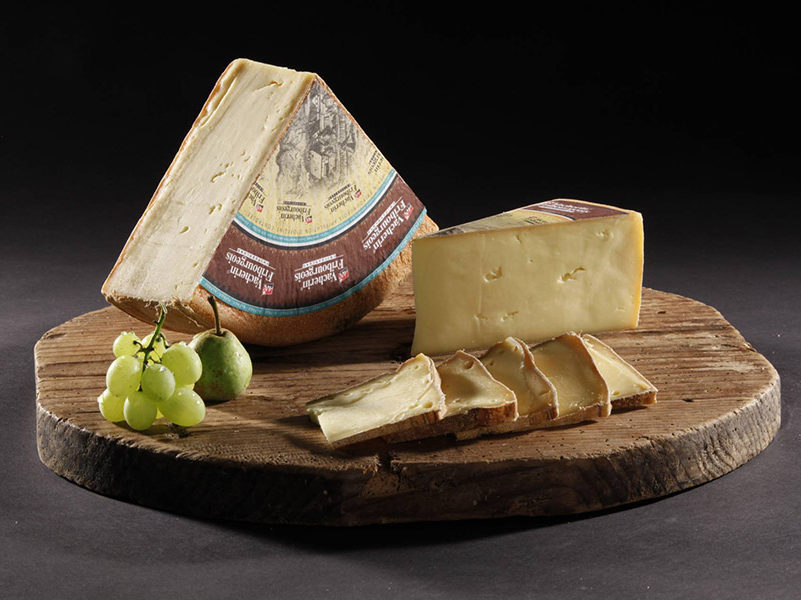
At number 5, we’ve got one of the most (criminally) underrated melting cheeses in the world! Vacherin Fribourgeois is a Swiss semi-soft cheese made with raw cow’s milk in the cantons of Vaud and Fribourg.
Presently, there are only a small number of artisanal cheesemakers who are authorised to make this cheese. As a matter of fact, they release it for consumption at different ages. You can enjoy the Classic Vacherin Fribourgeois at 6-12 weeks. And the Rustic at 12 to 25 weeks.
Overall, this cheese is an excellent table cheese with its flavour ranging from buttery to nutty. However, it truly comes into its own when melted in a fondue. Actually, it is a traditional ingredient in “Fondue Moitié-Moitié”. This classic Swiss recipe consists of half Gruyère and half Vacherin Fribourgeois.
6 Tête de Moine
It’s party time! If you’re looking for a statement cheese for your next gathering, then look no further than Tête de Moine. Tête de Moine is a semi-hard cheese made in the Bernese Jura Mountains of Switzerland.
At 2 months, Tête de Moine develops a semi-hard texture with a rusty red natural rind. Its aroma is quite pungent, specially when the top of the rind is cut. On the palate, this cheese is nutty, fruity and aromatic.
This unique cheese is best enjoyed shaved. You can do this using a sharp knife or you can used a Girolle. This ingenious cutter which has been specially designed for this purpose. Watch the video above for a demonstration.
BUY NOW: Premium Swissmar Girolle from Amazon →
7 Sbrinz
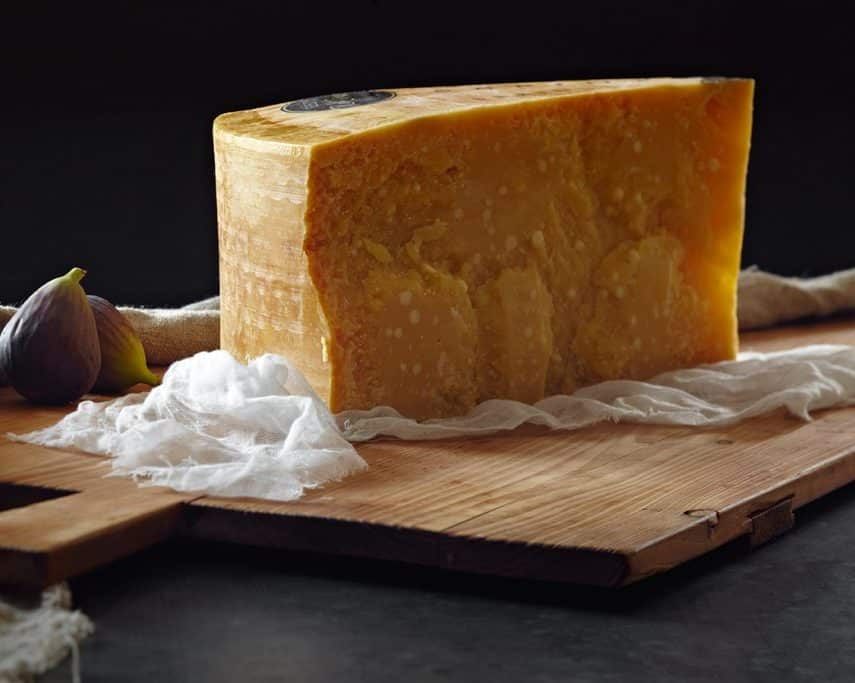
Number 7 is the oldest cheese on our list in terms of maturation period. Sbrinz is an extra-hard cheese from central Switzerland that boasts a tradition dating back centuries. Presently, only 26 select valley and alpine creameries produce it from top-quality local unpasteurised milk.
Unsurprisingly, this flavoursome cheese needs time to mature before it can be enjoyed. Indeed, the “youngest” wheels of Sbrinz are released for consumption at 18 months. The longer the cheese is matured, the more aromatic and spicy it tastes.
At 18 months, you can slice Sbrinz or shave it into rolls. However, it is only from 24 months onwards that Sbrinz develops its full flavour. The locals love to serve it as an aperitif or broken up into pieces (möckli) on a cheeseboard.
8 L’Etivaz
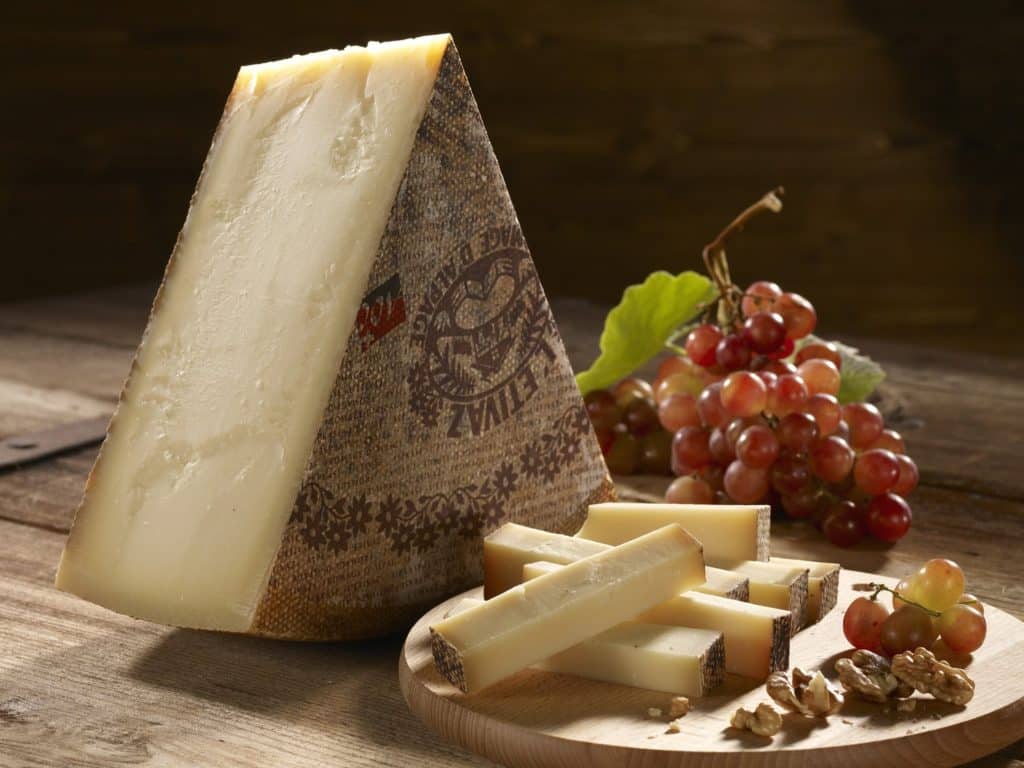
L’Etivaz is a seasonal hard cheese made using only unpasteurised cow’s milk. Currently, just over 100 alpine creameries in the Vaud Alps make this celebrated cheese from the months on May to October. To this day, they process the raw milk on site and use an open fire.
In many ways, L’Etivaz is made as Gruyère was 100 years ago. Local farmers make this cheese only when the cows are doing their summer grazing in alpine pastures. Moreover, they still use traditional copper cauldrons over open wood fires.
L’Etivaz has a semi-hard texture with a fruity, slightly nutty flavour. Actually, its flavour varies significantly depending on the soil of the different pastures. It is yellow ivory in colour and slightly sticky due to its saltiness. It is aged for 5 to 13 months before it is eaten.
9 Raclette du Valais
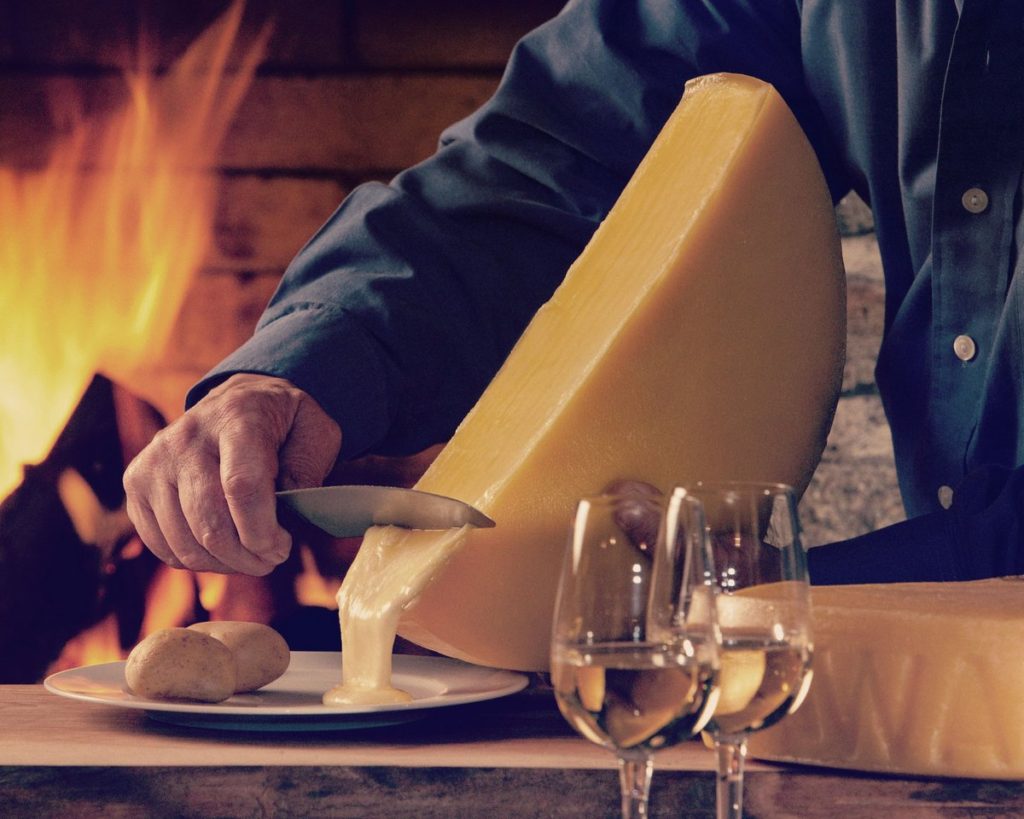
The final cheese on our list might just be the most spectacular one of them all. Raclette du Valais AOP is a semi-hard, full-fat, unpasteurised cheese. It is creamy and aromatic with a hearty taste.
The term raclette refers both to this type of cheese, and the dish it has inspired. Actually, the name comes from the French word racler which means “to scrape”. And, you’ve guessed it, the best way to serve this cheese is melted and scraped onto a plate of boiled potatoes.
One final interesting fact about this particular cheese is that it is the one that popularised the production of raw milk mountain cheeses in Switzerland.
What’s your favourite Swiss cheese?
We hope that you enjoyed reading our list of the best Swiss cheeses. Without a doubt, Switzerland is a cheese making powerhouse. And they produce some of the world’s best semi-hard and melting cheeses.
Did your favourite Swiss cheese make our list? Drop us a comment below. We’d love to hear from you.
